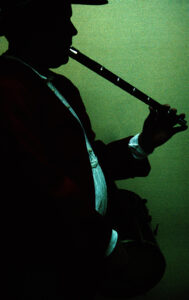Basque ethnography at a glance

Ezpata Dantza (sword dance) for Corpus Christi performed by Goizaldi Dantza Taldea (Donostia, 06/06/1985). Photo: E. X. Dueñas
“Traditional” and/or “Basque” is one way of pigeonholing the dance performed by groups here. That has not always been the case and that is also true of how they are performed, however hard people champion the authenticity and, therefore, the inflexibility of steps and shapes down through the centuries.
Time reveals the alterations, which are captured on film and in the large number of books and articles that have come to light in, at least, the last fifty years. However, if there is one book on choreography that is still relevant, it is the one printed in 1824. We are talking about Guipuzcoaco dantza gogoangarrien condaira edo historia… by Juan Ignacio de Iztueta (Zaldibia, 1767-1845).
Iztueta wrote the first case study on the dance of Gipuzkoa at a time when he argued it was in serious danger of disappearing. Furthermore, over and over again, he negatively criticised the drummers (pipers) who played non-native tunes, that undermined and led to the loss of local dances. His book – which was followed by another with melody scores two year later – is a treatise on how its 36 dances should be performed.
Even though it is a reference book for dantzaris [dancers] and experts in the field, the highly important bibliography surrounding it is unparalleled: from the works on the dances included in his book, followed by the comparison with the others making up the repertory of Euskal Herria, to the facts and events that were part of the author’s life.
Jesús Elósegui, José Garmendia, Father Donostia, Jose Ignazio Ansorena and Juan Antonio Urbeltz head – given their importance and detailed work – that long list of research that has so far analysed the life and work of the author from Zaldibia. Anybody wishing to learn more will find a magnificent website bulging with information at https://www.iztueta.com/.
However, Iztueta did not only write about, but he also performed and taught dance; his direct disciple is considered to be José Antonio Olano, who was followed by José Antonio Pujana, his son Cándido and, subsequently, Iñaki Gordejuela; the Goizaldi dance group of Donostia/San Sebastián are said to be the “torchbearers” of the tradition and celebrated its 75th anniversary in 2023.
 Two centuries on and the significant changes have been made to all aspects of the dances and dancing: their teaching, methodology, performance, presentation, etc. However, there have been more editions (1895, 1967 and 1990) of Guipuzcoaco dantza…, as if those changes had not affected the choreography or time simply stood still on that date.
Two centuries on and the significant changes have been made to all aspects of the dances and dancing: their teaching, methodology, performance, presentation, etc. However, there have been more editions (1895, 1967 and 1990) of Guipuzcoaco dantza…, as if those changes had not affected the choreography or time simply stood still on that date.
Emilio Xabier Dueñas – Folklorist and ethnographer


